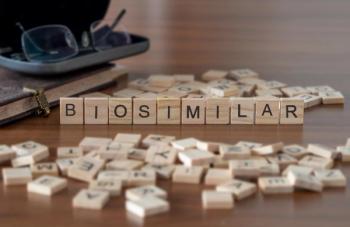
Evaluating Patients and Novel Agents for AML Maintenance Therapy
Dr James McCloskey discusses patient selection for AML maintenance therapy, as well as novel agents that are being evaluated in this setting.
Episodes in this series

Ryan Haumschild, PharmD, MS, MBA: Let's talk about treatment management after induction therapy. What are the current treatment trends that we have regarding our relapsed/refractory AML [acute myeloid leukemia] patients? Dr. McCloskey, I'll start with you. How do you select patients with AML for maintenance therapy? What are the maintenance therapy options for post transplant? This is an interesting area right now when we talk about maintenance therapy.
James McCloskey, MD: This is the easiest question so far because every patient should have maintenance therapy. The first maintenance therapy was a transplant. We have to recognize the idea of a transplant as not to clear residual disease burden but to provide immunosurveillance against relapse. Outside of that, for patients who do not go to transplant, the use of oral hypomethylators such as azacitadine is standard of care for all patients who might not proceed on to stem cell transplant. It's a Category 1 endorsement from the NCCN [National Comprehensive Cancer Network]. That's straightforward in the post transplant setting. This is not my area of expertise. I'm very fortunate at our center. The transplanters do it, but we come together infrequently. Since maintenance has been a standard approach of our care, we often provide a lot of input to them. Currently, according to NCCN guidelines, the one standard consideration would be a drug we haven't talked about yet, sorafenib for FLT3-mutant patients. Phase 2 [sorafenib maintenance] data showed a rather clinically significant improvement in outcome in patients with FLT3-mutant AML. The drug not mentioned there is midostaurin. There were some pitfalls to ratify, and that drug did not bear out for FLT3 mutants as maintenance therapy. The trial wasn't well-designed to answer that question, but I get that a lot. If we had a FLT3-mutant patient, should they continue with midostaurin? The answer is no. They should switch over to azacitadine if they're not going to transplant. Our transplanters pull from a variety of other data with the application of hypomethylators post transplant as well. That's less standardized there. There's a lot of work going on regarding even better options for maintenance in the future.
Ryan Haumschild, PharmD, MS, MBA: Speaking of those better options, are there any other novel agents? You listed a lot, and it gave us a great background. [Are there] any novel agents that are being evaluated in the maintenance setting that you're thinking about? What is the risk of relapse with those patients in AML?
James McCloskey, MD: The idea of maintenance is to prolong and maintain a remission, which is important because not only will that help patients live longer, but they feel better. They’re not needing transfusions; they're able to run around and do all that they want to do. Regarding maintenance in AML, we've struggled because until recently, we haven't had therapeutic options that were very conducive to maintenance. You need a drug that's going to be easy to give, that, ideally, patients could take at home and is not too toxic. As we think about that patient journey, we've talked about starting from induction and consolidation. It's important to understand that those patients can often get beat up both physically and emotionally. They're often tired of chemotherapy. We start preparing patients for maintenance, getting an understanding that if you don't go to transplant, we're going to go on to maintenance therapy. It's important to reset our goals. The goal of maintenance is to preserve that remission but also make it tolerable. Patients should understand that this is not going to be like induction therapy. This should be treatment that they tolerate that should not drastically impact their quality of life. If it is, then there's a problem we need to re-address. There are a couple immediate thoughts that we're looking to improve outcomes with maintenance beyond oral hypomethylated. The first obvious leap is to go to HMA [hypomethylating agent] plus venetoclax. It works in the upfront setting. It's a drug that's being studied as maintenance. We're also looking at other chemotherapeutics. At Hackensack, we do have an IIT [investor-initiated trial] with University of Pennsylvania and Georgetown University looking at low-dose daunorubicin and cytaraine in those patients. You give maybe your venetoclax and HMA first and transition to daunorubicin and cytarabine as maintenance. That's appealing because with HMA and venetoclax, we're looking at lifetime therapy potentially, which patients don't find appealing. The next segment a variety of targeted agents. All the drugs we talked about and more targeting FLT3 IDH and other mutations that might be unique to that person's disease. Lastly, immunotherapy. With checkpoint inhibitors, there's data, and I have looked at those drugs there. There are newer drugs that target that same cascade of interest.
Ryan Haumschild, PharmD, MS, MBA: There's some innovation coming, and I'm excited about it. It's going to be interesting to see how it changes that dynamic with therapy and how it ratifies maintenance and what we currently have.
This transcript has been edited for clarity.
Newsletter
Stay informed on drug updates, treatment guidelines, and pharmacy practice trends—subscribe to Pharmacy Times for weekly clinical insights.




